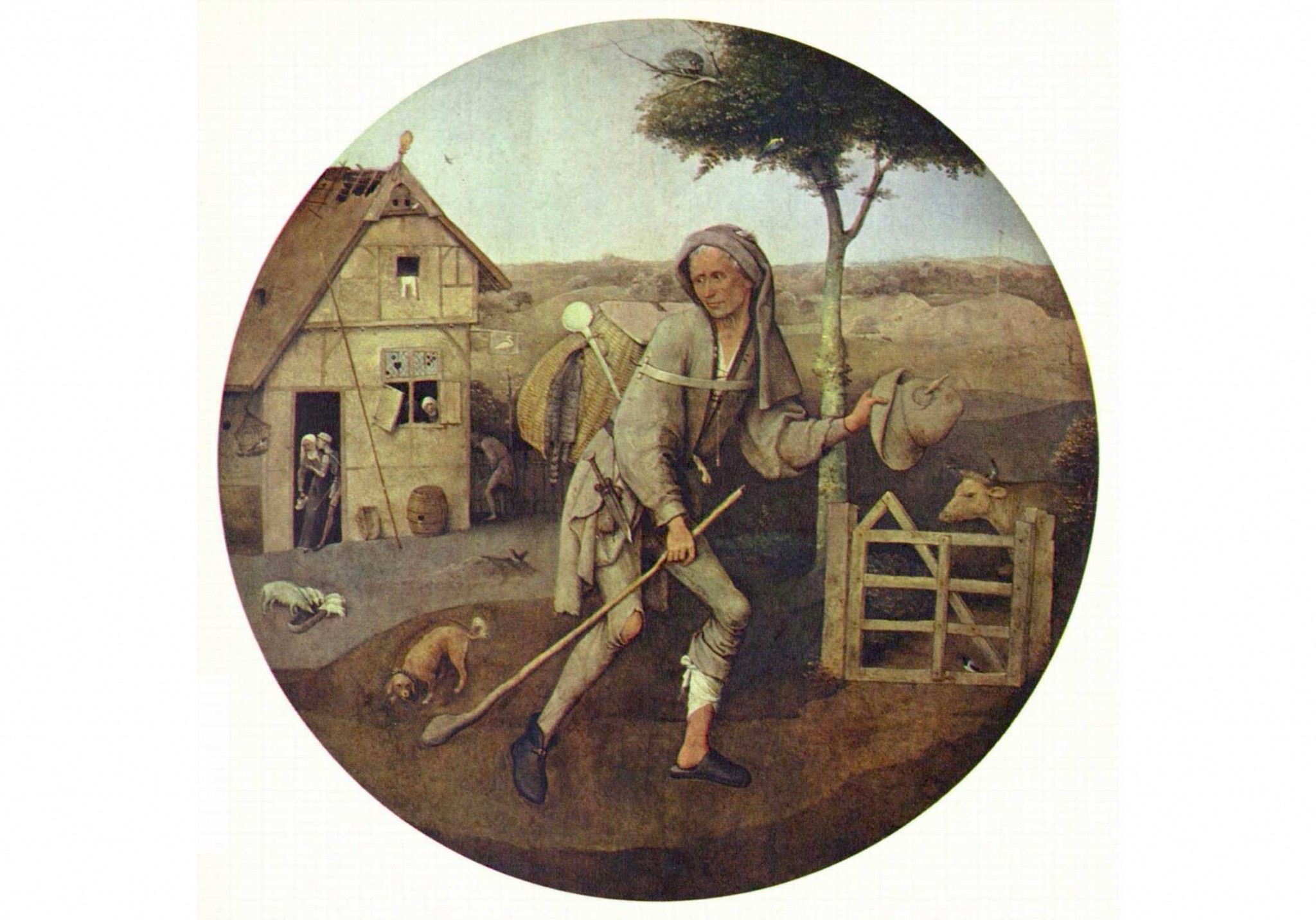
Renger 1969
“Versuch einer neuen Deutung von Hieronymus Boschs Rotterdamer Tondo” (Konrad Renger) 1969
[in: Oud Holland, vol. LXXXIV (1969), pp. 67-76]
[Also mentioned in Gibson 1983: 122 (E286)]
According to Renger the protagonist of the Rotterdam tondo is a pedlar who belongs to a particular tradition and has a special meaning. In sixteenth-century Dutch and German iconography we regularly see a pedlar: he is always joining a drinking, gaming or flirting company that is apparently seduced to playing dice by him, he is always standing upright and each time he has just arrived. His basket – which can have different shapes – is an attribute that characterizes him as a type. Renger also refers to other depictions in which only a pedlar appears. In a sixteenth-century Dutch text (from Thuys der fortunen) this type of gambler and rascal is called Alberoyt (literally: All-Broke). He is a deceitful person who makes money by playing dice but who loses this money in the end because of his inclination to intemperance and squandering.
Renger believes Bosch’s tondo is the first known example of a series in which this character ‘Alberoyt’ is depicted but he does not think it is the prototype. All representations of the cheat Alberoyt can probably be traced back to a source that has remained unknown up to now. According to Renger the pedlar with torn clothes and shoes is a typical Dutch version of the motif. His attributes usually refer to the careless, impoverished drunkard and madcap. A number of other details in Bosch’s tondo are said to point out that the protaganist indeed belongs to the order of pub crawlers.
The pedlar on the closed wings of the Haywain triptych should probably also be identified as this type of cheat, but the context in which he here appears, needs a specific interpretation.
In a convincing way Bernet Kempers (1973a and 1973b) has argued that Renger is wrong: the characters in which Renger wants to recognize pedlars, are not pedlars at all but obliemannen: sellers of waffles who invited their clients to gamble (play dice) for their waffles. As Bernet Kempers points out: apart from a few general signs of shabbiness Bosch’s pedlars have nothing in common with the characters Renger is discussing.
It is somewhat surprising that Renger has not realized his error in due time: one of the representations he signals (an illustration from Thomas Murner’s Schelmenzunft, published in Augsburg in 1513 = Renger’s illustration 11) carries an inscription that clearly refers to the Hyppenbuben orden and Rengers himself points out that originally the Hippenbuben were sellers of waffles who seduced the visitors of inns to gambling games. Renger’s article is therefore yet another example of ‘much ado about nothing’ in the literature about Bosch. About this article, see also De Bruyn 2001a: 184-185.
[explicit]